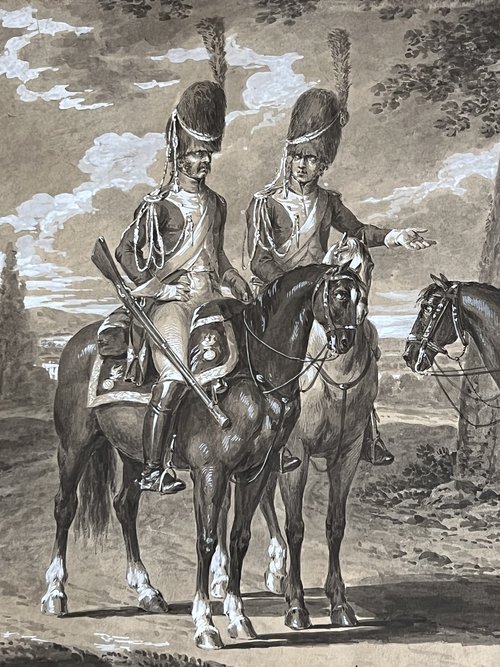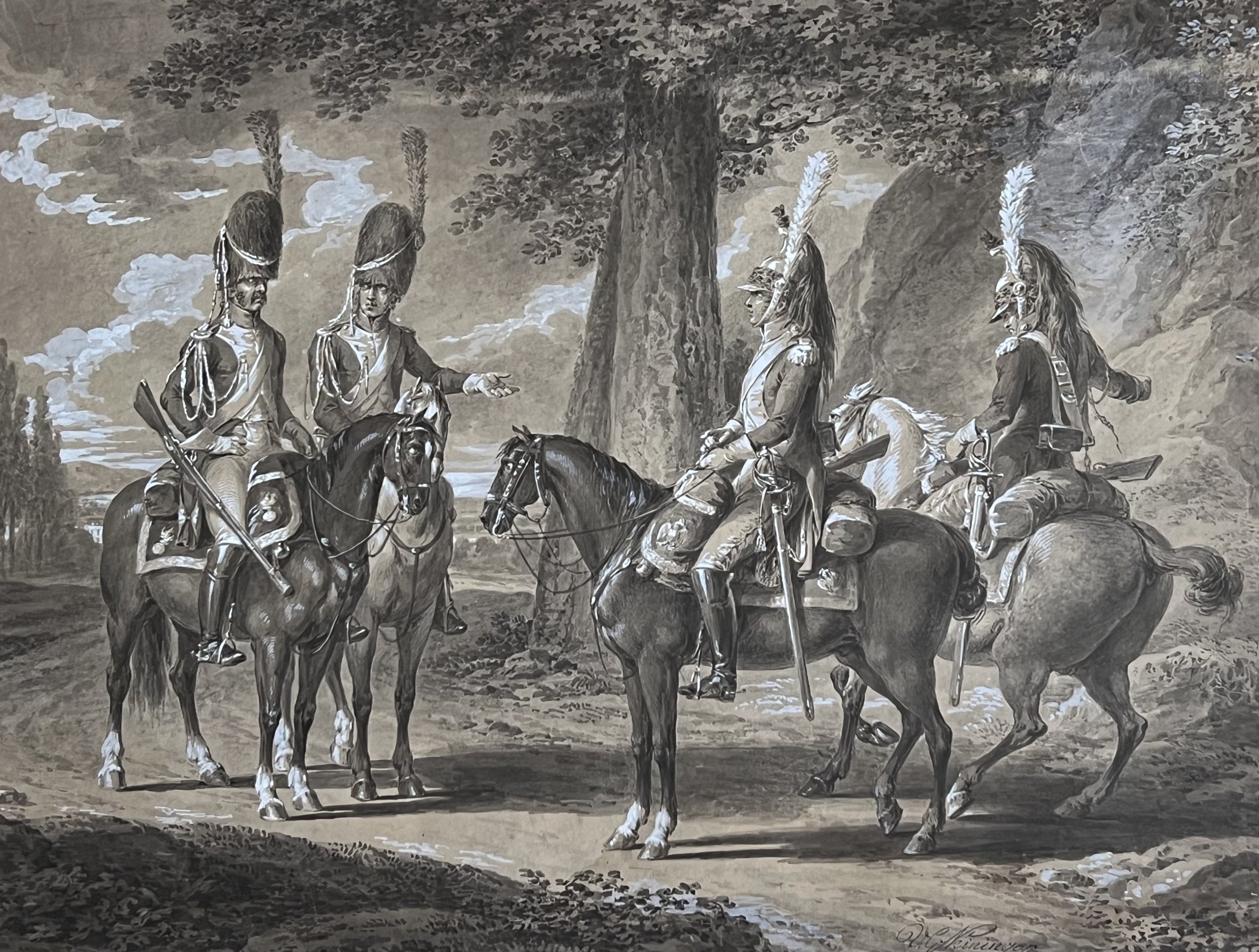
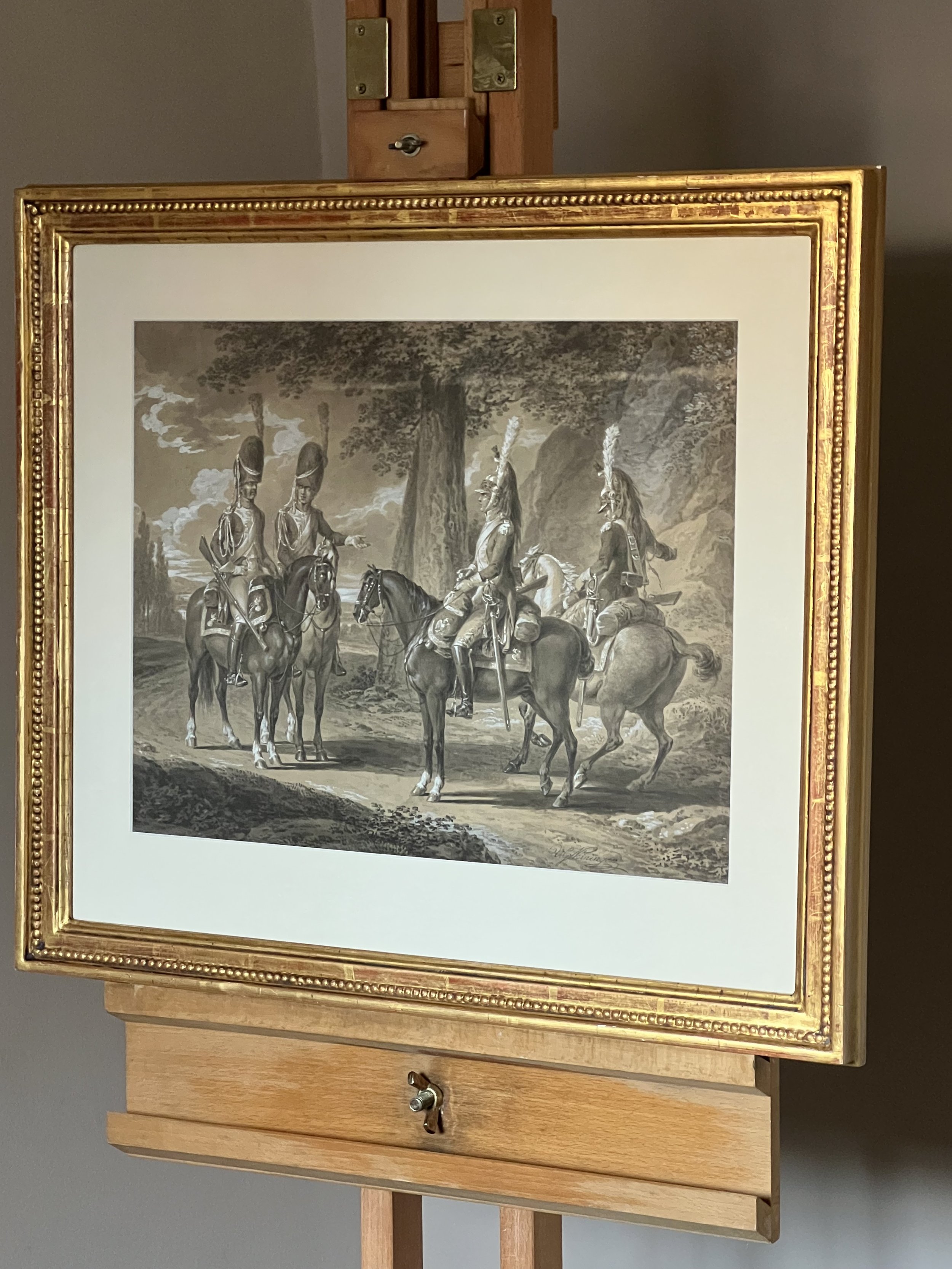

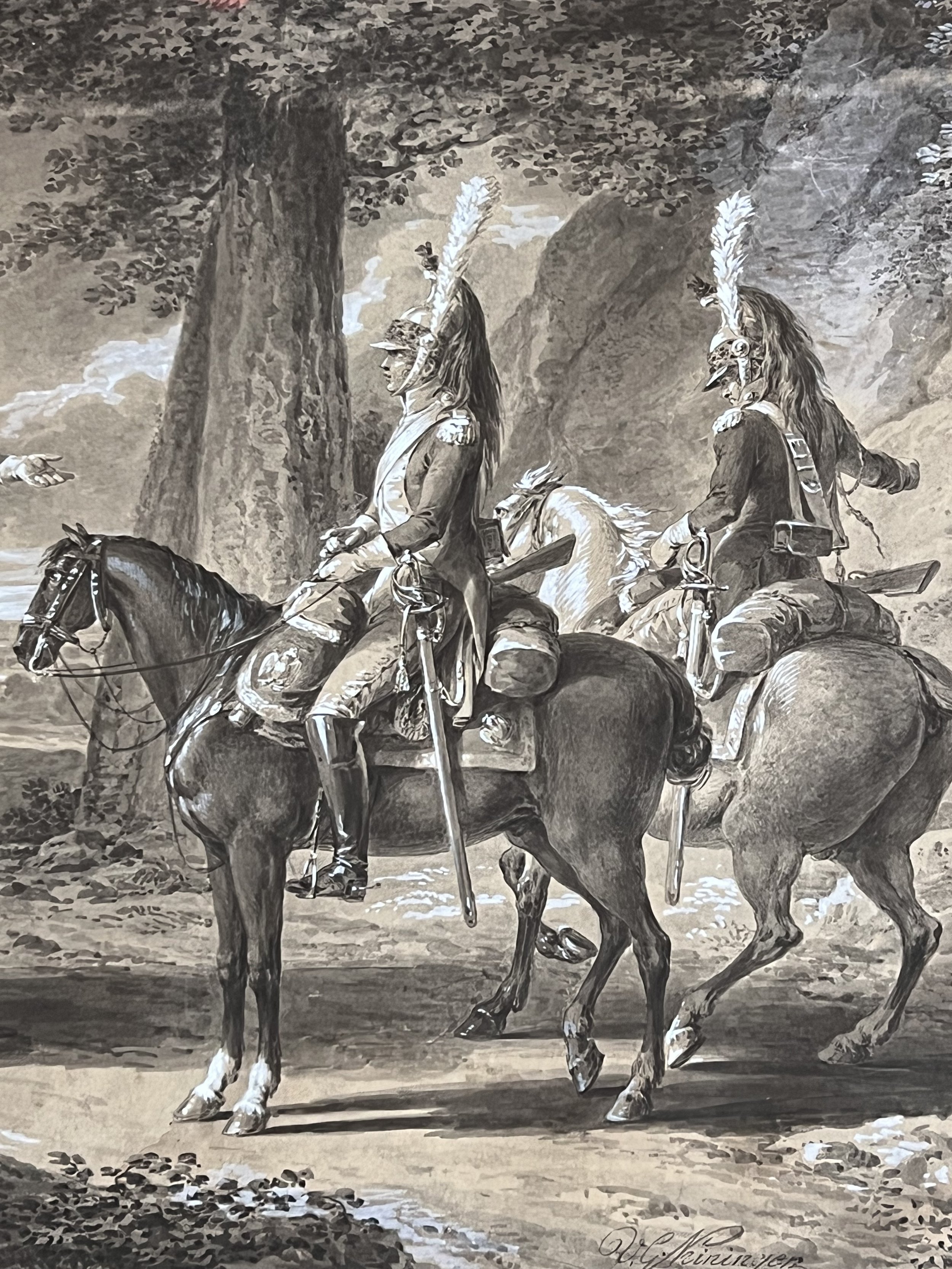

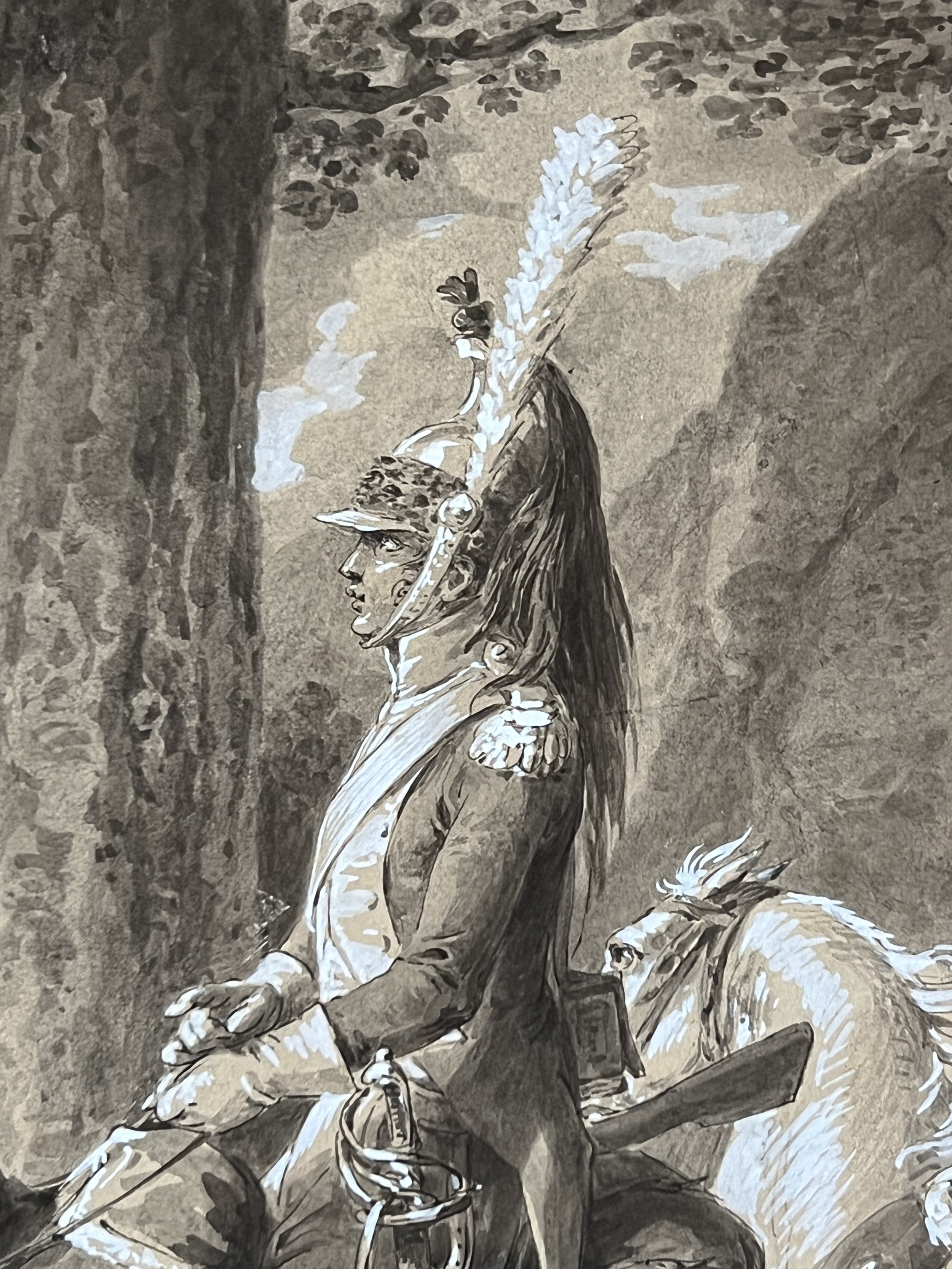
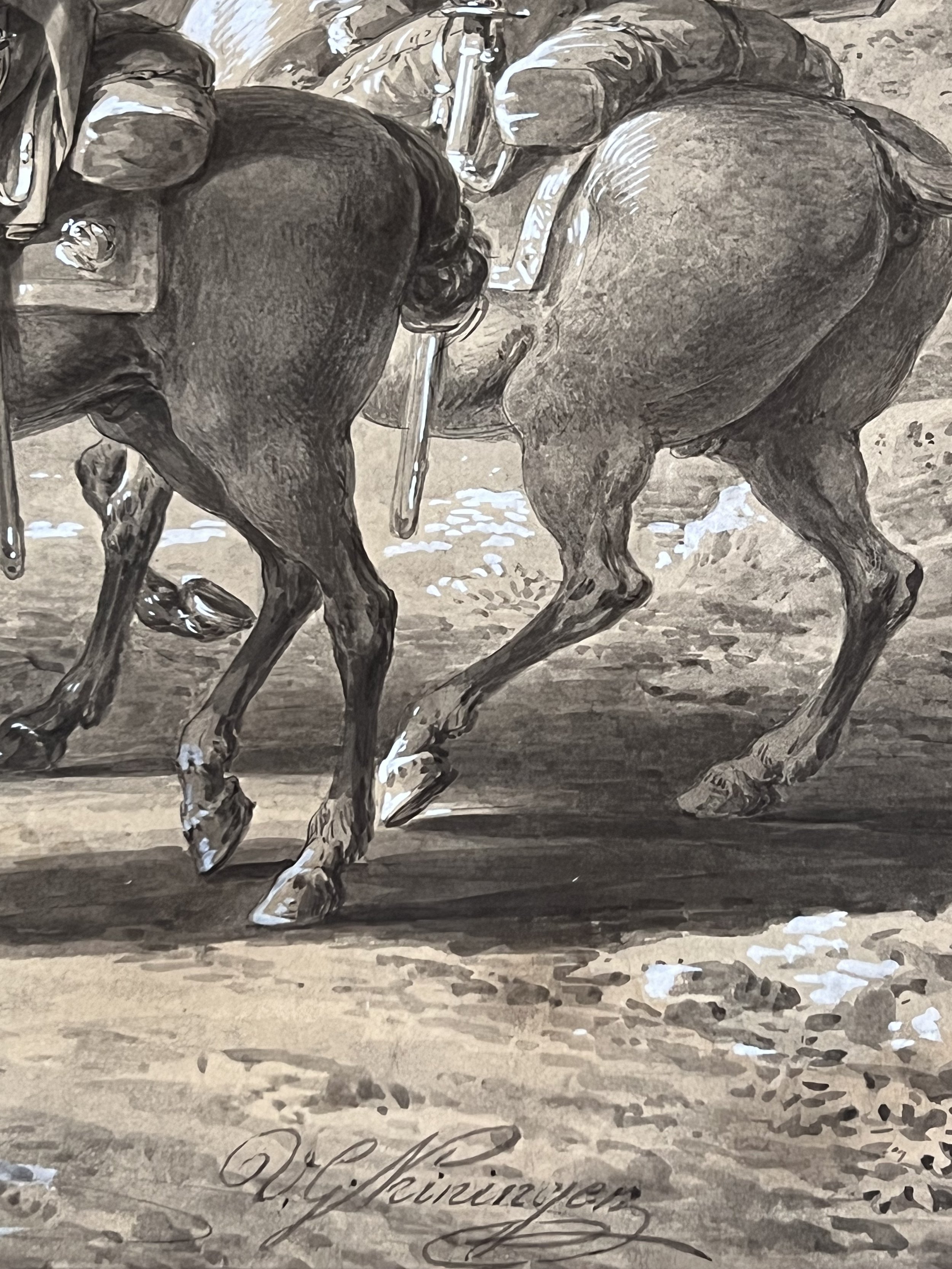
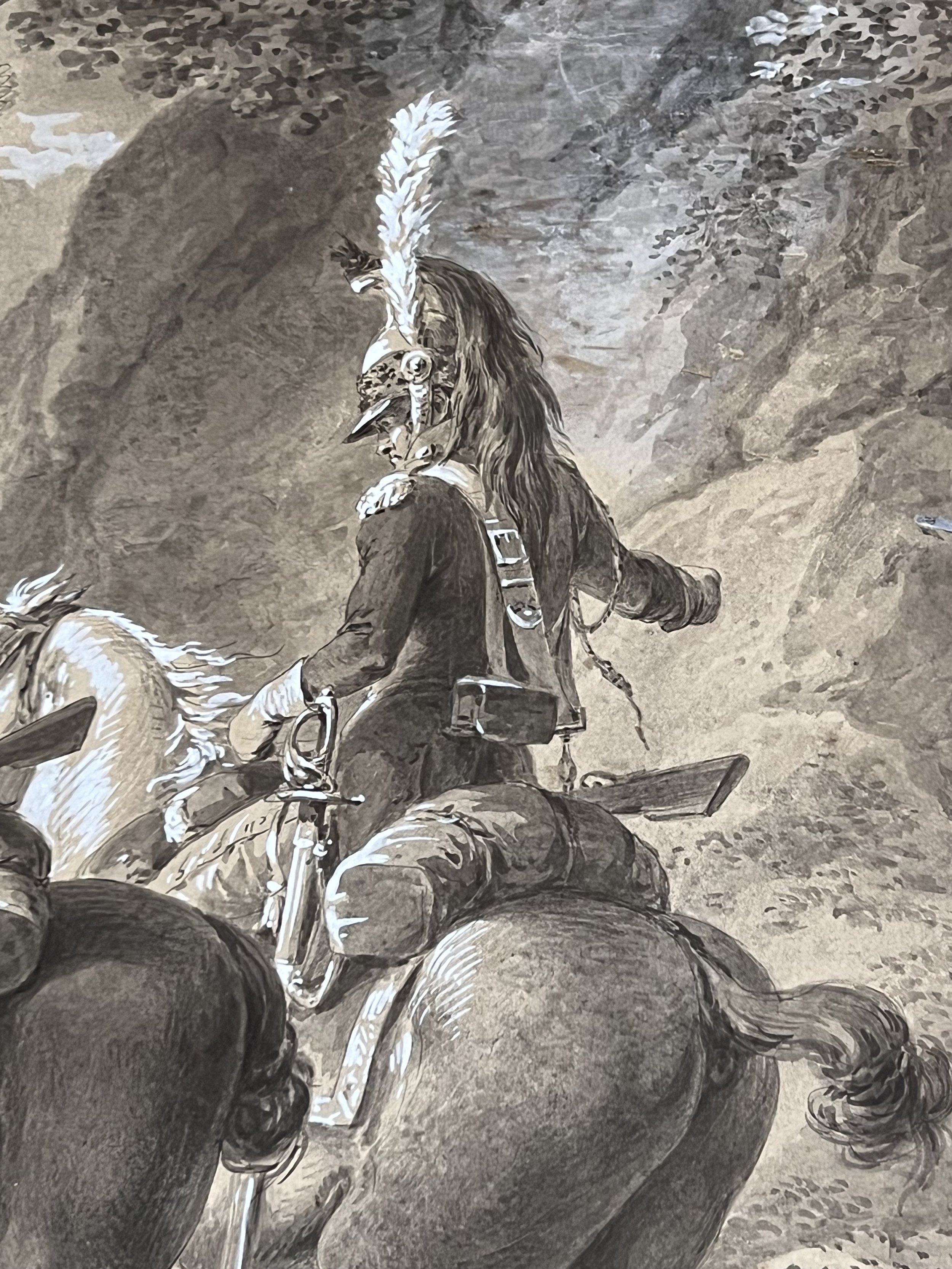

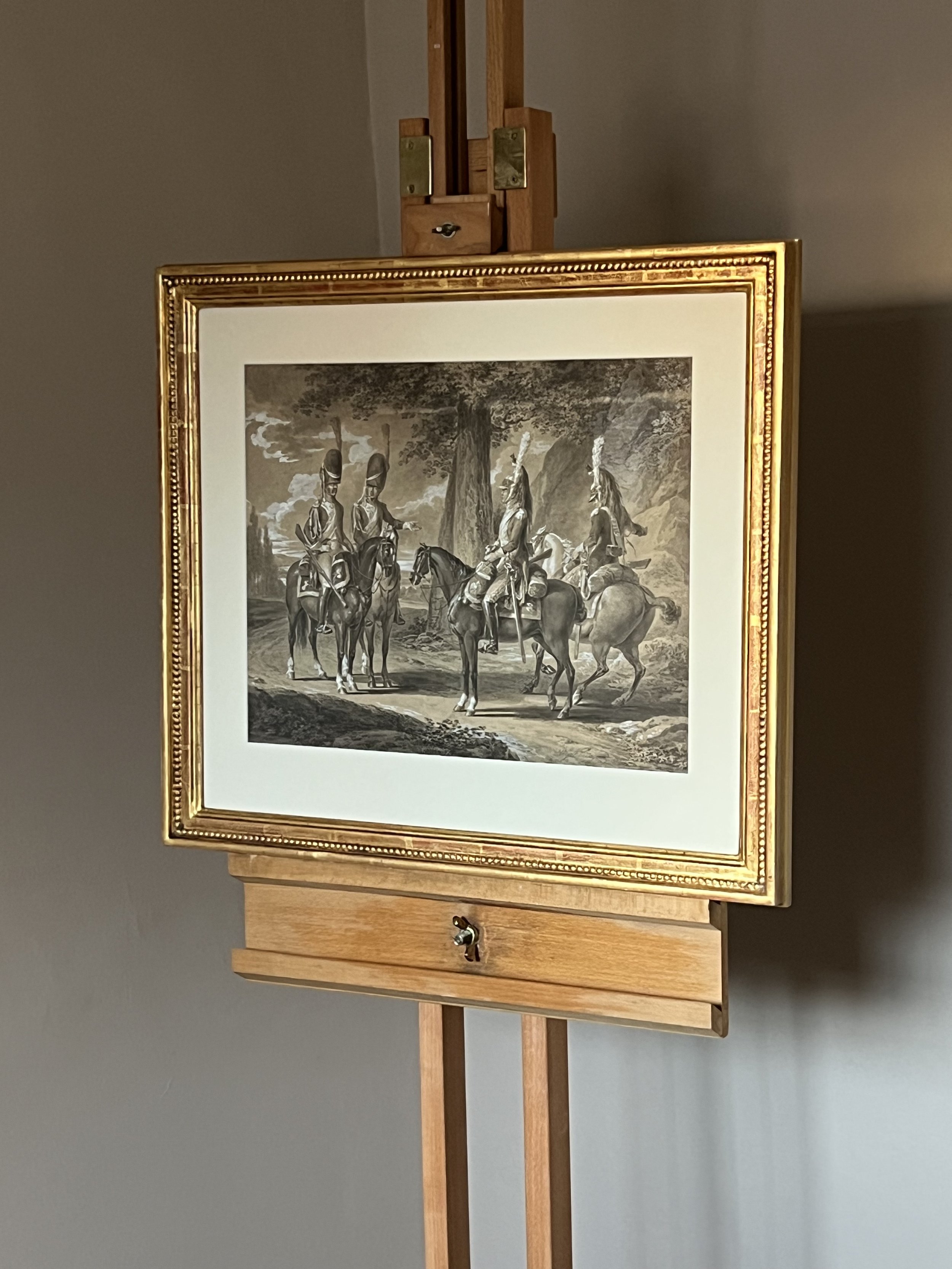
VINCENZ GEORG KININGER (1767-1851) - FOUR FRENCH CAVALRYMEN IN A CLEARING c.1810
Fine quality and highly detailed ink, wash and white lead on paper study of a group of French cavalrymen in a clearing by the celebrated German/Viennese artist Vincenz George Kininger (1767-1851)
Signed by the artist lower right.
This atmospheric picture depicts four French cavalrymen. The two figures on the right wearing helmets are Dragoons belonging to Napoleon’s Army and they have Imperial Eagles on their horse furniture - saddle housings and pistol holster caps. They both carry carbines slung from their shoulder belts - the butts of the weapons stick up on the off-side of their horses - and officers never carried carbines.
They are therefore Privates of a Dragoon regiment, though it may not be possible to identify their precise regiment; their lapels are pale and probably yellow or pink. If they are intended to represent the Dragoons of the Imperial Guard, their lapels would be white, and their collars should be dark green the same as their coats, with their collars also being pale.
The two gentlemen in bearskins are probably likely to represent Grenadier à Cheval of the Imperial Guard - dark blue coats, white lapels and dark blue collars. their plumes would have been scarlet. The most visible of the pair also has a carbine or more correctly, a musketoon - carbines were short, musketoons were longer in the barrel.
There were no Horse Grenadiers in the Line Cavalry, they only existed within the Imperial Guard … and fortunately by 1810, or thereabouts, which is the date of this picture, the cavalrymen did not have to throw grenades from horseback!
Kinninger: Vincenz Georg K., born in 1767 in Regensburg, † on May 17, 1851 in Vienna, entered the Vienna Academy of Fine Arts as a pupil in 1781, received his first artistic training in the dirter's engraving school and from 1786, he studied under the direction of Professor John Jacobi. His talent and hard work earned him the affection of the director of the Academy of Arts, J. Füger, who warmly cared for the artist, even making material sacrifices for his advancement.
After he had completed his training at the academy in 1790, he worked independently and received numerous comissions both at home and overseas. His faithful reproductions of the old masters in mezzotint form were handled with great sensitivity.
He was frequently employed by the Vienna Art and Industrial Comptoir, founded in 1801, where he executed several large sheets based on works by Abel, Füger, Angelika Kaufmann, Ruthard, Grassi, Lanzi, etc. The artist had the greatest skill in portraits, which he produced in large numbers. In his final years Kininger also produced lithographs, based on pictures by Füger, Teniers, Dujardin, Rubens and Loder.
Hormayr, Archive for Geography and History, 1823, p. 15. Auer's Polygraphic Journal Faust, J. 1855, p. 180.
Weiß, Karl, "Kinninger, Vincenz Georg" in: Allgemeine Deutsche Biografie 15 (1882), p. 771 [online version]; URL: https://www.deutsche-biographie.de/pnd116175494.html#adbcontent Regensburg, Germany (1767) / Vienna, Austria (1851) "Viennese officers on horseback”
This fine work by a celebrated artist is ready to hang and enjoy under art glass, in an antique gilded frame within a conservation grade mount.
Higher resolution images on request.
Worldwide shipping available.
Sheet: 34cm x 44cm / 13.5in.x 17.5in. Framed: 52.5cm x 59.5cm / 20.5in.x 235in.
Price: £1795
I am most grateful to Dr. Andrew Cormack for his assistance in helping to identify this portrait, and for his comments on uniform.

